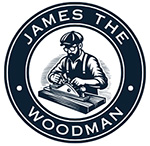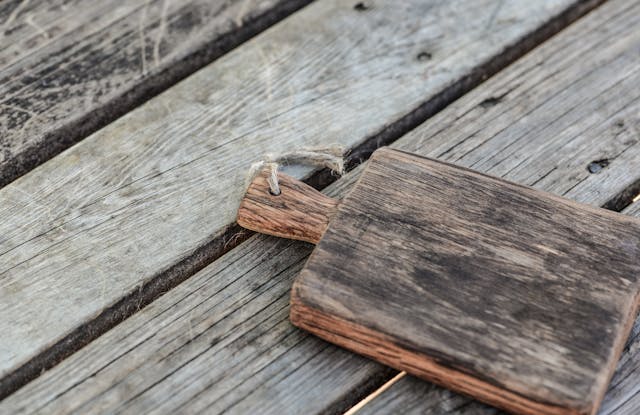Wooden cutting boards are a popular choice for many home cooks and professional chefs alike. They are durable, naturally antimicrobial, and gentler on knives compared to plastic or glass alternatives. However, maintaining a wooden cutting board requires specific care practices to ensure it stays clean, safe, and long-lasting. Unlike plastic boards, wooden ones cannot be simply tossed into the dishwasher. Instead, they require routine cleaning, conditioning, and proper storage to avoid contamination and damage. Below are five effective ways to keep your wooden cutting board clean and in excellent condition for years to come.
1. Wash Immediately After Use
One of the most important habits to develop when using a wooden cutting board is to wash it immediately after each use. Letting food particles, especially proteins like meat, fish, or dairy, sit on the board can lead to staining, odours, and bacterial growth.
To clean the board, start by rinsing off any food debris with warm water. Then, use a soft sponge or brush and a mild dish soap to scrub the surface gently. Avoid using harsh detergents or abrasive scouring pads, as these can damage the wood and strip away its natural oils.
Rinse thoroughly to remove all soap residue, and then wipe the board dry with a clean cloth or paper towel. Do not soak the board in water or put it in the dishwasher, as this can cause warping, cracking, or splitting.
2. Disinfect with Natural Ingredients
Even after regular washing, it’s a good idea to occasionally disinfect your wooden cutting board, especially after handling raw meat, poultry, or fish. Since wooden boards are porous, they can absorb juices and bacteria if not cleaned properly.
A safe and natural way to disinfect your board is to use white vinegar. Pour white vinegar directly onto the board or use a clean cloth soaked in vinegar to wipe down the surface. Vinegar has acetic acid, which is effective at killing common foodborne pathogens like E. coli and Salmonella.
Another option is to use hydrogen peroxide (3%). After washing the board with soap and water, pour hydrogen peroxide over the surface and let it bubble for a few minutes. Then rinse thoroughly and dry.
Lemon juice can also be used as a mild disinfectant. Rub half a lemon over the board’s surface, especially if there are any odours or stains. The citric acid helps to neutralize smells and reduce bacteria.
3. Deodorize and Remove Stains Naturally
Over time, wooden cutting boards can develop lingering odours or stains from pungent ingredients like garlic, onions, or raw meat. To keep your board fresh and clean, it’s helpful to deodorize and remove stains periodically.
Sprinkle a generous amount of coarse salt or baking soda over the board’s surface. Then, using half a lemon as a scrubber, rub the lemon across the surface in circular motions. The salt or baking soda acts as a gentle abrasive, while the lemon provides acid and a fresh scent.
Let the mixture sit on the board for a few minutes before rinsing thoroughly with warm water. Wipe the board dry and stand it upright to air dry completely. This technique not only deodorizes the board but also lifts embedded food particles and stains.
4. Condition with Food-Safe Mineral Oil
Wood is a natural material that can dry out and crack if it loses its moisture. Regular conditioning helps to preserve the board’s integrity, prevent warping, and create a protective barrier that resists moisture and bacteria.
Use a food-safe mineral oil or a specialised cutting board oil to treat your board once a month or whenever it looks dry. Avoid using vegetable or olive oils, as these can go rancid over time and develop unpleasant smells.
To apply the oil, pour a small amount directly onto the surface and use a clean cloth to rub it in, covering the entire board evenly. Let the oil soak in overnight, then wipe off any excess with a dry cloth before storing the board.
Some people also use beeswax-based conditioners, which provide an additional layer of protection and a smooth finish. Regular oiling extends the life of your board and enhances its appearance.
5. Store Your Cutting Board Properly
Proper storage is a critical yet often overlooked aspect of keeping your wooden cutting board clean. After cleaning and drying your board, it’s important to store it in a way that prevents moisture buildup and promotes airflow.
Always store your cutting board upright or on its edge rather than laying it flat. This allows air to circulate around the board and helps it dry thoroughly. Moisture trapped underneath a flat-lying board can lead to mould or mildew.
Keep your board in a dry, well-ventilated area, away from sinks, stovetops, or dishwashers that may introduce humidity or heat. If you have multiple boards, ensure they’re not stacked tightly together, as this can trap moisture between them.
Avoid storing your board in direct sunlight or near heating elements, as extreme temperatures can cause the wood to warp or split over time.
Conclusion
Wooden cutting boards are a timeless kitchen essential, valued for their aesthetics, functionality, and natural antibacterial properties. However, they do require mindful maintenance to keep them clean, safe, and beautiful. By adopting these five key practices—washing after every use, disinfecting with natural ingredients, deodorizing and removing stains, conditioning regularly, and storing properly—you can significantly prolong the life of your cutting board and ensure it remains a hygienic tool in your culinary routine.
Consistent care not only protects your investment but also enhances your cooking experience. With a clean and well-maintained cutting board, you can confidently prepare meals knowing your kitchen tools support both health and performance.

